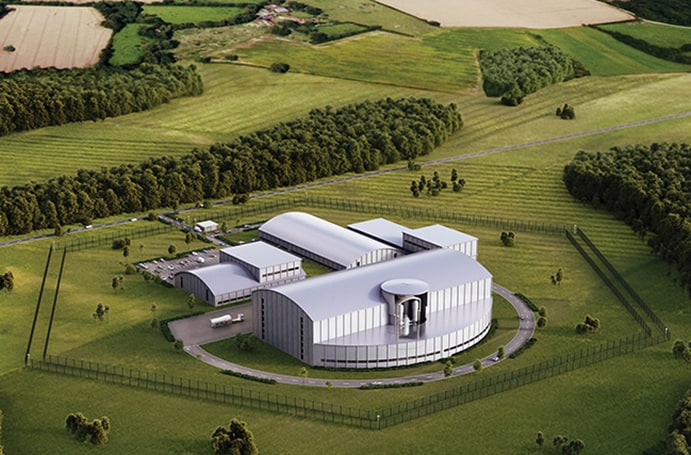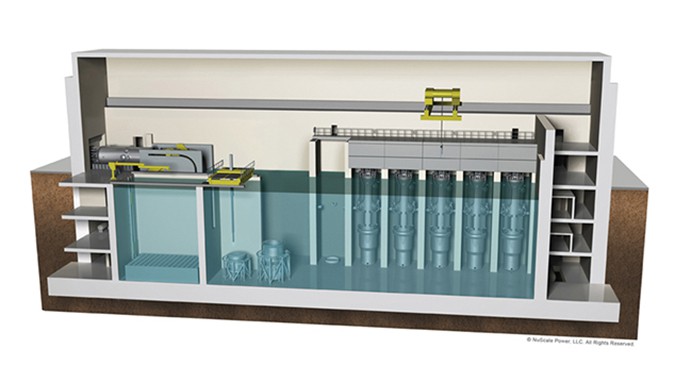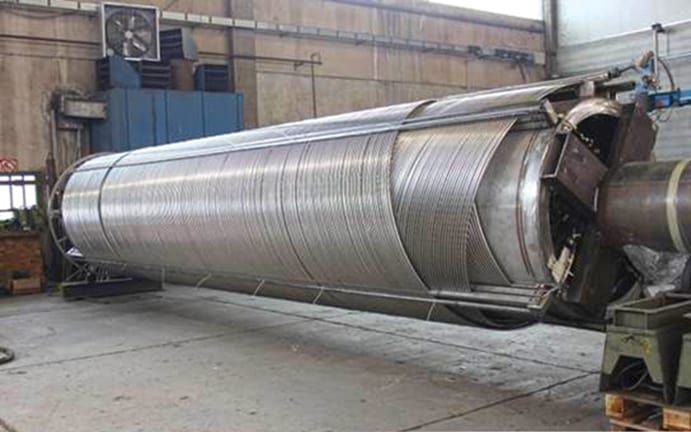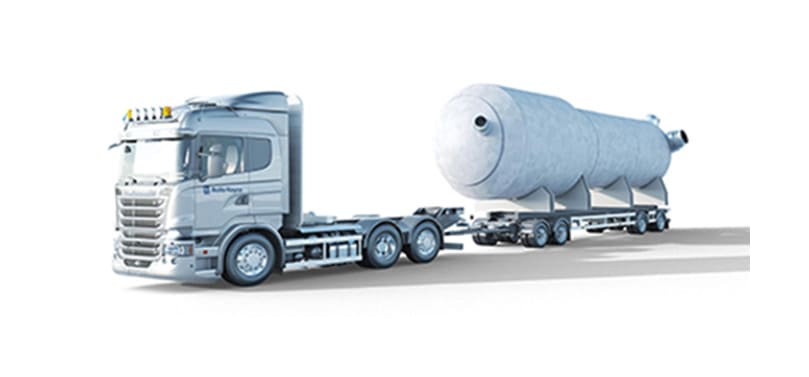UK engineers are in the vanguard of efforts to develop compact nuclear reactors, otherwise known as small modular reactors. Stuart Nathan reports
Even before the first kilogram of concrete has been poured, Hinkley Point C may be among the last of a kind. Large nuclear reactors, producing electricity on a gigawatt scale, have dominated the sector for years, but their size and complexity are now combining to put their cost beyond the means of most countries.
A new nuclear paradigm, which seems to defy the logic that has dictated increasing the size of power stations, is being tipped to take over. Small modular reactors (SMRs), with generating capacities of up to 500MW of electricity (MWe), are increasingly seen by governments and the nuclear sector as a better option for reducing costs, and unlocking the potential of nuclear for new markets. SMRs can be built in factories and assembled on site rather than having to be constructed as costly one-offs, and this factor, combined with their more frugal use of materials, is seen as key to bringing down the cost. It also allows for a more distributed energy generation model that could be attractive in regions with remote communities and distribution networks not geared to handling large amounts of electricity.

Leading the field in the UK are Rolls-Royce – whose manufacture of nuclear reactors for Royal Navy submarines makes it the only company to have produced, operated and maintained nuclear technology – and US firm Nuscale, based in Oregon and developing technology that originally came from US Department of Energy research supported by Oregon State University. Nuscale has declared an interest in developing manufacturing capability and capacity in the UK.
In technology terms, Nuscale and Rolls-Royce have both opted for pressurised water reactors cooled by light water (LPWR): scaled-down versions of the type of reactor that has dominated the nuclear sector for the past few decades in the US and Europe. The thinking behind this is that regulators both know and understand the technology and therefore are more likely to grant approval in a shorter time.
Nuscale goes for flexibility
However, the two designs stem from different approaches to reactor deployment. For Nuscale, flexibility of the nuclear installation is the most important factor, so it has opted for a low-power output module designed to be deployed in groups of up to 12, depending on power requirements. The reactor, with an output of 160MW of thermal energy or 50MWe, is fully integrated, with steam generation within the same housing as the reactor itself; the circuits for the primary coolant (which removes heat directly from the nuclear fuel and is in contact with the fuel rods) and the secondary coolant (used to generate steam and never coming into contact with radioactivity) are both within the reactor containment vessel.

The secondary heat exchangers use helical tubing to keep the volume needed for steam generation as low as possible; the steam generators can be connected directly to a steam turbine with no need for separate bulky and complex steam-generating heat exchangers, as are used in conventional nuclear power. This helical arrangement is one of the major engineering innovations in the Nuscale reactor, according to chief technology officer José Reyes, who was also the main designer of the module. Moreover, the entire reactor module acts as a heat exchanger because it is installed submerged in a water tank to which it can give up heat in an emergency; Reyes claims that, in an emergency shutdown situation, this reactor pond cooling will keep a failed reactor safe indefinitely.
Rolls–Royce opts for larger output
Rolls-Royce, by contrast, opted for a larger power output. Its reactor is sized so that a typical installation may have only one reactor, or maybe two. Although it is similar in size to the Nuscale module, its internal layout is more similar to a conventional reactor in operation and therefore needs to be connected to steam generators: two for a 220MW installation and four for 440MW. This, said David Orr, senior vice-president in the firm’s nuclear business, in a conversation with The Engineer, is deemed to improve the design’s “selectability” because of its similarity to existing LPWR installations.
Because of Rolls-Royce’s experience in supplying nuclear reactors for submarines, it’s a common assumption that this is the origin of its reactor design. However, Harry Holt, president of Rolls-Royce’s nuclear operations, at a recent SMR conference in London said this was not the case.
“Submarine reactors have to do very different things from civil power reactors. They have to be able to accelerate the submarine, which calls for variable power output that a civil reactor does not need, and they have to cope with the stresses of movement,” Holt explained. “Also, they are designed to last for the life of the submarine without the need to be refuelled. Civil reactors have to last much longer and are regularly refuelled. We operate a land-based prototype submarine reactor in Scotland and that’s given us familiarity with the ONR [Office of Nuclear Regulation], which will help us with the approval process,” said Holt.
In fact, Rolls-Royce’s policy is to ensure that no defence-related nuclear research transfers to the civil sector, he said. “The SMR was conceived as a separate project and is designed around the market requirements, with an eye to regulatory approval, manufacturability and selectability.”

Another difference between the two companies’ reactors is the way their coolant systems operate. The Nuscale reactor has no coolant pumps in the primary circuit, using only natural circulation. The heat given up to the coolant water by the reactor fuel causes it to rise by convection; then it falls back down to the fuel rods as it loses heat to the secondary circuit. This simplifies the electrical systems needed, with post-shutdown monitoring systems powered by arrays of batteries.
A further innovation is that the pressure inside the containment system is kept at near-vacuum levels, which, Nuscale claims, minimises reactor vessel heat loss, eliminating the need for insulation. It also reduces corrosion inside the vessel.
On the back of a truck
Despite this, the two reactors are of a similar size: Nuscale’s is 19m long and 2.75m in diameter, and Rolls-Royce’s only slightly bigger at 16m long (with the control rod drive system installed) and 4.5m in diameter. Both are sized to be carried on standard trucks, train carriages or barges; a key consideration for SMRs. They are composed of steel forgings in standard nuclear-grade materials, which it is anticipated would be produced by external specialist contractors and transported to a factory for assembly. Both companies are working with academics on methods for making the reactor assemblies, with the Nuclear Advanced Manufacturing Research Centre in Sheffield involved in research and prototyping. Reyes noted near-net forging and coating techniques as being of particular interest: these will require regulatory approval for nuclear use, but this can happen within the timescale envisaged for UK deployment by 2030, he said.
Both reactors are designed to be refuelled every two years. The Nuscale module contains a 17 x 17 array of fuel rods. Orr preferred not to reveal the number of rods in the Rolls-Royce design, saying only that it was between 10 and 150. Both use standard light-enriched nuclear fuel in a similar fuel rod to that of a conventional PWR. The Nuscale installation uses a refuelling procedure with the exhausted module physically removed from the reactor pool; in practice, Reyes said, the refuelling schedule would be staggered, with the process probably carried out every year.

A key part of Rolls-Royce’s SMR strategy is that it hopes to be part of a consortium that delivers a whole nuclear power station within a turnkey project. The company is therefore seeking partners – most likely from China, Germany or the US, Orr said – to provide the other sections of the station that are not part of the nuclear island: notably, the steam turbines. The UK no longer has a capability to make turbines large enough for nuclear power stations, even the scaled-down ones supplied for SMRs.
Production engineering techniques are key to cost reduction. Tony Roulstone, course director at Cambridge Nuclear Energy Centre, said: “The cost of building nuclear plants is related to their complexity and the work you have to do on site to build them, and nothing the industry has tried has worked. So it’s time to try something else. The manufacturing approach works in every other industry. Nuclear is the only industry in which production engineering is not used.” He added: “It’s only by getting into a factory environment and building these things over and over again that you learn how to bring the cost down.”
Herein lies a potential problem for any UK project to manufacture SMRs. To produce the required economies, Roulstone said, the programme would have to be quite large, making exports essential. This would disadvantage the UK versus countries that could finance manufacture on a much larger scale for their domestic market.
Click here to read about how SMR researchers are exploring alternatives to PWR Technology
Government identifies potential SMR site in North Wales. Read more here




Project to investigate hybrid approach to titanium manufacturing
What is this a hybrid of? Superplastic forming tends to be performed slowly as otherwise the behaviour is the hot creep that typifies hot...